Illustrating a Beetle in Watercolour
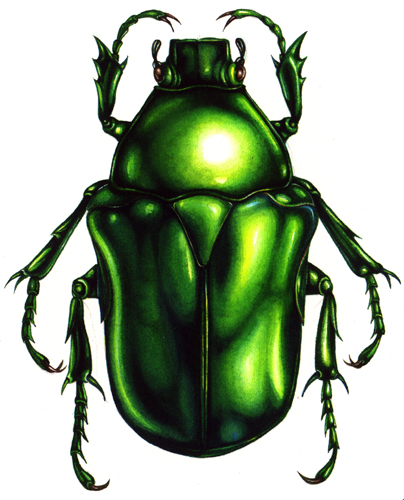
As a natural history illustrator, I get asked to undertake lots of different scientific illustrations. Completing a botanical illustration requires a different approach from animal illustrations; and the shiny, metallic iridescence of a beetle is pretty much confined to these incredible insects alone.
Drawing up the beetle
When I draw a beetle, firstly I get the shape right. I use callipers, and tracing paper to plot out the measurements, and then “join the dots” to get the body plan.
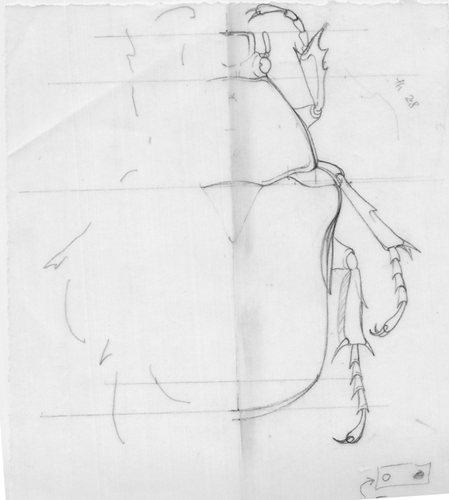
Transferring the image and keeping the page clean
Then I transfer the image onto watercolour paper (normally Fabriano Artistico). A good idea is to put a sheet of plain paper on top of your illustration, and fold it back over the area you’re working on. This keeps the rest of the page clean. Areas of white paper are vital when trying to capture the glow of iridescence.
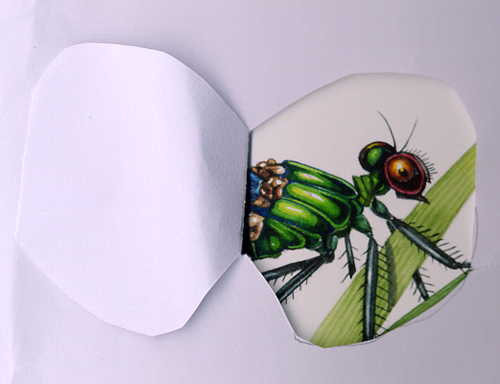
Order of areas to paint
I tend to paint legs and head first, they tend to be easiest, and I enjoy mixing the blues and purples involved in getting the blacks right (obviously, not all beetles have black heads and legs.)
Painting the iridescence on a beetle
I always make a fresh cup of tea and gear myself up for the shiny area of thorax and abdomen. They have to be treated as a whole, and it’s vital not to get lost in detail til the initial washes are down.
I rely heavily on Doctor Martin Inks to show an iridescence. I tend to mix the inks with normal watercolours (I favour Windsor and Newton) which makes them easier to move around on the page.
I lay down the wash in layers. It’s absolutely vital to leave plenty of white to gleam through the layers of colour, so the first washes are mostly water with the merest suggestion of a yellow colour. Then they get progressively darker as I work outwards, and will introduce other colours. Once the layers are dry, I work into them, blending and more importantly, making the darks really dramatic. This is what makes the beetle shine.
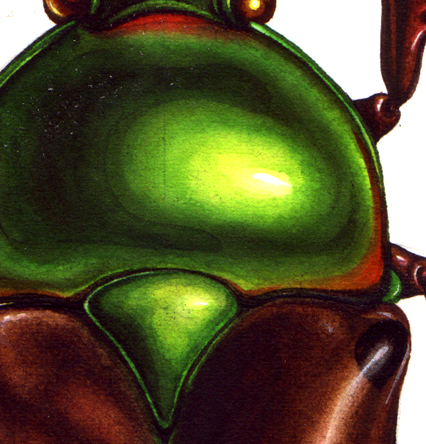

Once you’re happy with the shine, you can work on the details, even introducing white gouache highlights if you think it’s necessary, and putting in minutiae such as dimples on the carapace.
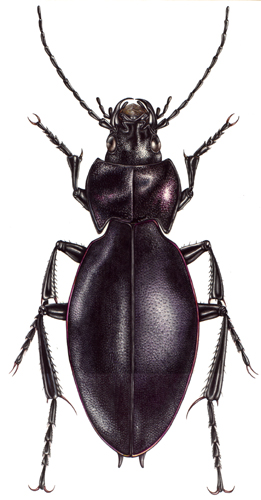
It’s always a good idea to see how other scientific illustrators handle beetles, Carim Nabahoo, Chris Tomlin, Chris Shields, and Richard Lewington are all exemplary


Hello Lizzie, I absolutely love this beetle and would love to have a go at painting one, but I have struggled to get the iridescence right. Can you please tell me which Dr PH Martin ink you use to mix in with your watercolours? Many thanks.
Best wishes,
Barbara.
PS. I have recently come across your work which I am amazed by!